
On the evening of December 6, 1914, the veteran night watchman at the Central Park Menagerie was making his rounds when he heard Caliph Murphy II roaring from inside the lion house. Caliph II had never roared like that before, so the loud noise caught Louis Seibold’s attention. He looked toward the lion house and saw an orange glow through the rear windows of the old wooden building.
As Seibold ran to unlock the lion house, Policeman Dodson of the Central Park police squad called Fire Department headquarters on 67th Street. He also contacted Head Keeper Bill Snyder, who in turn summoned as many zoo keepers to the scene as possible.
The men knew they’d need all the help they could get if the fire in the lion house got out of control and any of the 22 animals inside the burning building – a dozen lions, four leopards, one Siberian tigress, two pumas, and three hippos — lived to escape.
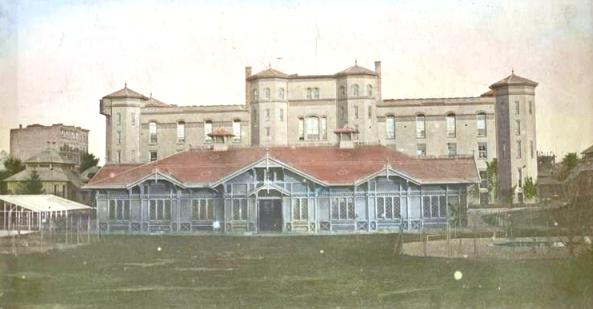
Approaching Caliph’s cage, Seibold could see smoke pouring from behind the wall. As the roars of the lions, tigers, and pumas intensified – they could be heard on Fifth Avenue — everyone began to worry that the animals would all burn to death if the fire got out of hand.
The first recruit on the scene was Thomas Frank Hoey, a former Barnum & Bailey trainer who had recently been promoted from zoo keeper to shepherd of the sheep that grazed in Sheep Meadow. Hoey quickly assembled the warm-weather extension cages that projected from the lion house in case they were needed for rescue efforts. He was especially concerned about young Akbar the lion, his mate, Helen, and their newborn cubs.
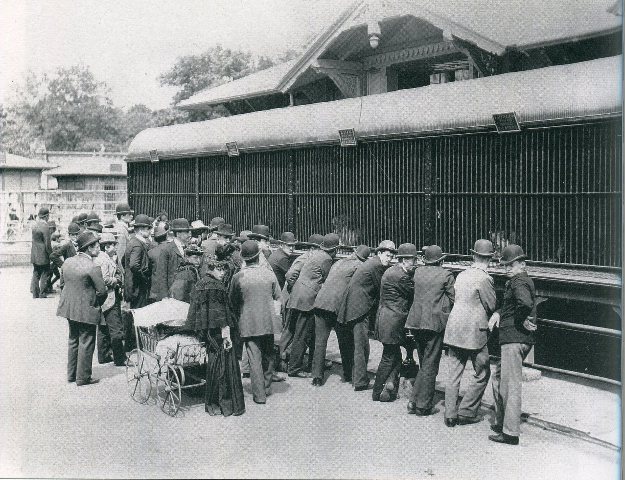
A crowd in front of the lion cages at the menagerie in Central Park, 1895. In 1914, the lion house was still lit by gas jets. Zoo employees told the press that they were always afraid of fire in the building, especially since the indoor cages were wooden (only the bars in front were metal). Museum of the City of New York, Bryon Company.
As Battalion Chief Patrick J. Graham and the firemen from Engine 39 and Ladder 16 prepared to enter the building, Seibold hooked up a standpipe hose from behind the cages and began pouring water on the fire. The firemen also began making their way to the rear of the lion house, albeit, their attempts were hampered by an aggressive puma and tigress who lashed at the men as they passed by their cages.
Sensing their fear and extraordinary danger, Caliph II, the zoo’s popular hippo, went into action.
Caliph Murphy II
Caliph II was born in the basement of the Arsenal building at the Central Park menagerie on March 6, 1908. Weighing a whopping 60 pounds at birth, he was the eighth offspring (give or take) of the renowned Miss Fatima Murphy (aka Mrs. Murphy) and her mate, the late Caliph, a jumbo hippo that died just two months before his namesake’s birth.
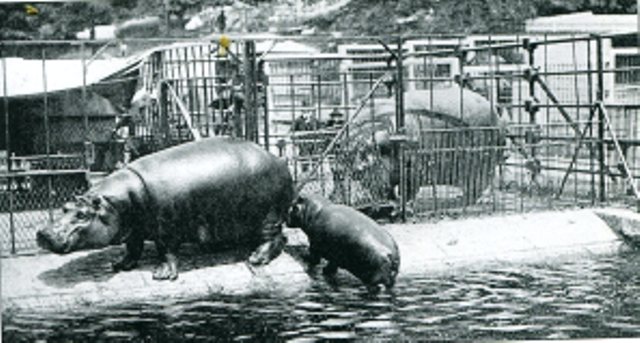
In warm months, Mrs. Murphy and Caliph II lived in an outdoor enclosure near the primate house. But in late fall they were transferred to steam-heated tanks in what was called the bathroom suite of the south end of the lion house. According to Hoey, who spent many years as keeper of the lions and hippos, the felines were none too pleased when the hippos moved in for winter. As he once told a reporter, “They’d say, ‘Here come those fat folks in the next flat who make such a beastly noise splashing about in their bathtubs.’”
I wonder if the big cats appreciated the fact that all this splashing about is what saved their lives the night of the fire…
On that night, the 6,000-pound Caliph II was alone in his tank, which was next to the wall where the fire had started. Mrs. Murphy and her eight-month-old baby were in a separate tank next to him. Frightened and confused, Caliph began lashing about in his tank. As he frantically splashed about, the water was thrown up against the burning wall, helping to extinguish the flames.
Thirty minutes after the fire was spotted, the flames were extinguished and all the animals were safe. Although Seibold thought the fire may have started by a faulty electric wire outside the building, others thought it may have started from a lighted pipe left in a worker’s overalls in Caliph’s cage.
The Makeshift Menagerie and Police Station at Central Park
The impromptu menagerie began around 1862 in the basement of the Arsenal building near the south-east section of the park, and in small cages outside the building. The new Central Park police squad and stables were also housed in the Arsenal building.
According to John W. Smith, former director of the Central Park menagerie, the first animals to share this space with the policemen were a small black bear, a pair of Kerry cows from Ireland, seven Virginian deer, and a few monkeys, raccoons, foxes, opossums, ducks, swans, pelicans, eagles, and parrots.
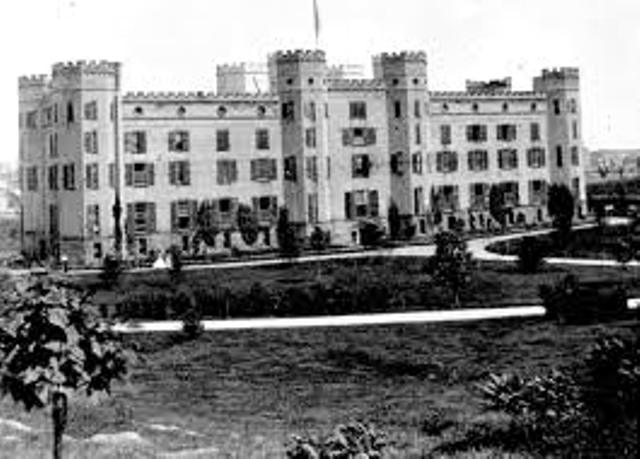
There was also a small enclosure on the Mall near the Casino restaurant (formerly the Ladies’ Refreshment Saloon; today the Rumsey Playfield and SummerStage) where some of the smaller animals and birds were exhibited on weekends (the poor little bear would be chained to a tree).
In early years, animal trainers and circus men like P.T. Barnum used the Arsenal as a storehouse for their surplus stock. They also offered animals to the zoo in winter months so they wouldn’t have to care for them during the off-season. The problem with this arrangement was that the circus men could take their animals away whenever they pleased – the animals did not belong to the city.
The Arsenal was also not well suited for a menagerie — let alone a police department — as noted in this Department of Parks building report for 1871:
“A limited space of the first story of this building was occupied by a number of clerks. A small part of the basement (damp and unsuitable as it was) was used by the Central Park Police. The whole building was offensively objectionable. Various animals were confined in the basement and on the first floor, with their cages in a state of great insecurity and danger. There had been no extra ventilation furnished to this building from the time it had been used as an Arsenal, and its unwholesome condition was apparent to sight and smell.”
In 1882, the menagerie was recognized by the Board of Apportionment, which appropriated $15,000 annually for feeding the animals and making repairs. Even though this doubled to $30,000 in 1888, it was still not enough money to obtain permanent animals.
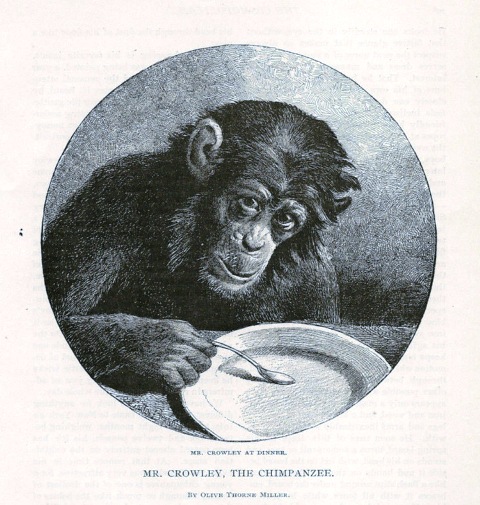
Mr. Smith Goes to Central Park
In 1892, following the forced resignation of menagerie superintendent William A. Conklin, New York City appointed John W. Smith to the position of menagerie director. Smith, a former superintendent and acting president of the Second Avenue Railroad Company, acquired most of his animal knowledge with the railroad, where he was responsible for overseeing the care of the horse car line’s 2,000 horses.
John Smith’s goal was to procure permanent animals at no cost to the city, in order to create a year-round exhibit of excellent animals. He also wanted to build more animal houses, replace the dirt paths with fine paved walkways, and replace the rotting wooden fences with iron ones.
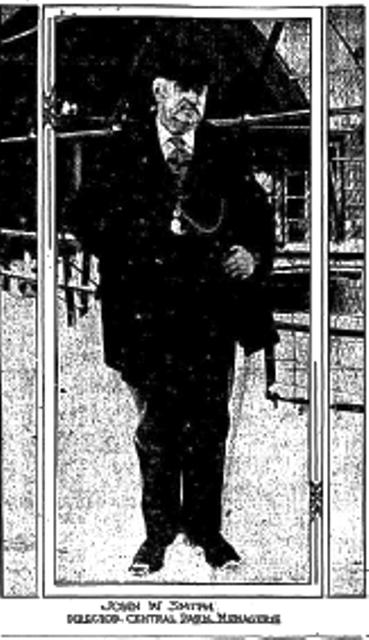
John was able to achieve all these goals by breeding animals and then selling or trading them with other zoos. One of the most successful animals in the breeding program was Miss Fatima Murphy, a nine-year old hippo from Natal, South Africa, who arrived in the U.S. in 1880 via ship from Hamburg (she had been captured by a group of men who worked for Carl Hagenback, world-famous animal trainer of the renowned menagerie in Berlin).
Mr. Smith and Miss Murphy Build a Zoo
By 1892, Miss Murphy was already “married” to a large Nubian hippo named Caliph Pretzelstein, who was purchased from the Zoological Gardens of Cincinnati for $5,000 in the spring of 1888 (he was also captured by Hagenback’s men on the Nile River).
The couple had their first baby on December 2, 1889, which Conklin and the zoo keepers named McGinty Murphy (if it were a girl, they were going to name her Mary Ellen Ryan Murphy). John Smith made a deal with Hagenback to trade McGinty – and any subsequent baby hippos – for many less valuable but equally desirable animals.
Over the years, Mrs. Murphy and Caliph had about ten offspring (not all survived), including Lotus, Congo, Fatima, Iris, Heimey, Lulu, Sirius, Peter the Great, and Caliph II. Each hippo sold for about $5,000, which is how a small makeshift menagerie turned into a large permanent zoo.
The Origins of Political Correctness?
On April 11, 1893, The New York Times published a letter from an Irish-American who complained about the zoo’s practice of giving Irish names like Bridget and Patrick to all the monkeys, hyenas, rhinos, and hippos. That night, representatives from many Irish societies held a meeting at Ledwith Hall on 45th Street and Third Avenue to discuss the letter.
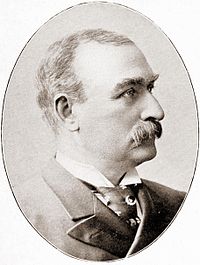
The Times interviewed several prominent New York City men of Irish descent, including Irish-born Mayor Thomas Francis Gilroy, retired Judge Morgan J. O’Brien, and renowned circus man James A. Bailey. All three men said they agreed that giving the zoo animals Irish names was offensive.
Judge O’Brien told the Times that he “regarded it as a disgrace to the American people that such bigotry and intolerance should be manifested by the officials of the zoo”, and he was pleased the newspaper was finally calling attention to the injustice. James Bailey said, “I do not think it is in good taste to give honored Irish family names to the repulsive –looking animals in the Central Park menagerie.”
New York City Board of Parks Commissioners President Paul Dana responded that the zoo neither officially named the animals nor prohibited the nicknames used by the keepers and the New York press. He explained that most of the keepers that gave names to the animals were Irishmen; for example, he said Mrs. Murphy was named by an Irishman named McGurty.
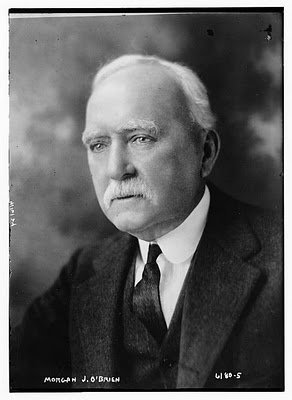
Perhaps McGurty was once scorned by a woman named Miss Murphy and this was his revenge, Dana suggested. Other board members suggested the news reporters were responsible for creating and publicizing the names, and should therefore be more creative by using names of all nationalities, like Hans, Francois, and Alfonse.
Pressured into action by all the media attention, John Smith agreed that no distinctive Irish names would be applied to any of the animals. Two days after the letter was published in the Times, he ordered all the keepers to drop the offensive Irish nicknames.
From now on, they’d have to stick to names like Tom, Dick, and Harry. Mrs. Fatima Murphy, however, was allowed to keep her Irish surname.
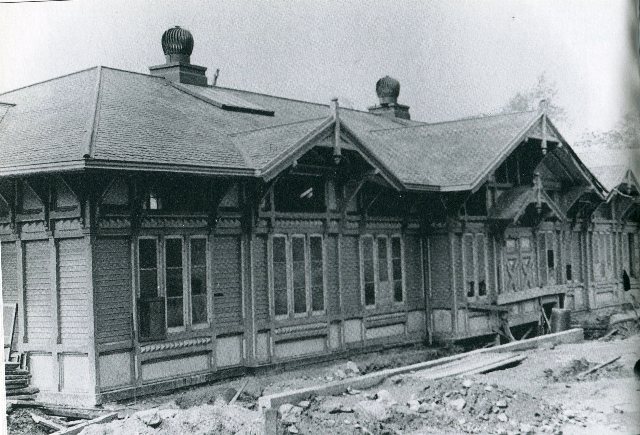
The End of the Murphy Legacy
On April 28, 1929, Mrs. Murphy passed away. Her body was taken to the American Museum of Natural History, where it was modeled and put on display in the Old World Mammal Hall next to a model of her late husband Caliph.
Five years after her death, the menagerie was completely remodeled, and all the old wooden buildings were torn down to make way for a brand-new brick and limestone “picture-book” zoo. Sadly, Caliph II, the last of the Central Park Murphy clan, never really got to enjoy his new home at the new Central Park Zoo.
On January 8, 1935, only a month after the zoo reopened, he was found dead in his new 15-foot-deep indoor pool in the lion house. He did leave a widow, Rosie, but it’s not known if she was liberated or had taken his last name.
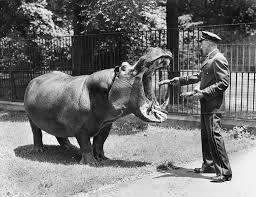




[…] from the market stalls was a large drill room for the Seventh Regiment (until it relocated to the Central Park Arsenal in 1848), and later, for the Sixth, Eighth, and Seventy-First Regiments. Up until about 1857, […]
[…] other sources report that Director William Conklin of the Central Park menagerie had freed 18 pairs of sparrows in the spring of 1865, with 6 pairs going to the Trinity churchyard, […]
[…] Museum at this time, offered the two-year-old wolves to Superintendent William A. Conklin of the menagerie at Central Park. On Monday afternoon, August 25, 1891, a delivery driver from the park came to pick up the wolves […]
[…] Street on December 30, 1892, Donald Burns called on William A. Conklin, the Superintendent of the Central Park Menagerie, to see if he would be interested in taking the swans. Conklin said he’d have to make a formal […]
[…] 1914: Caliph Murphy II, the hippopotamus that saved Central Park Asad's house. Hatchingcatnyc.com. recovery 2025-07-07. […]